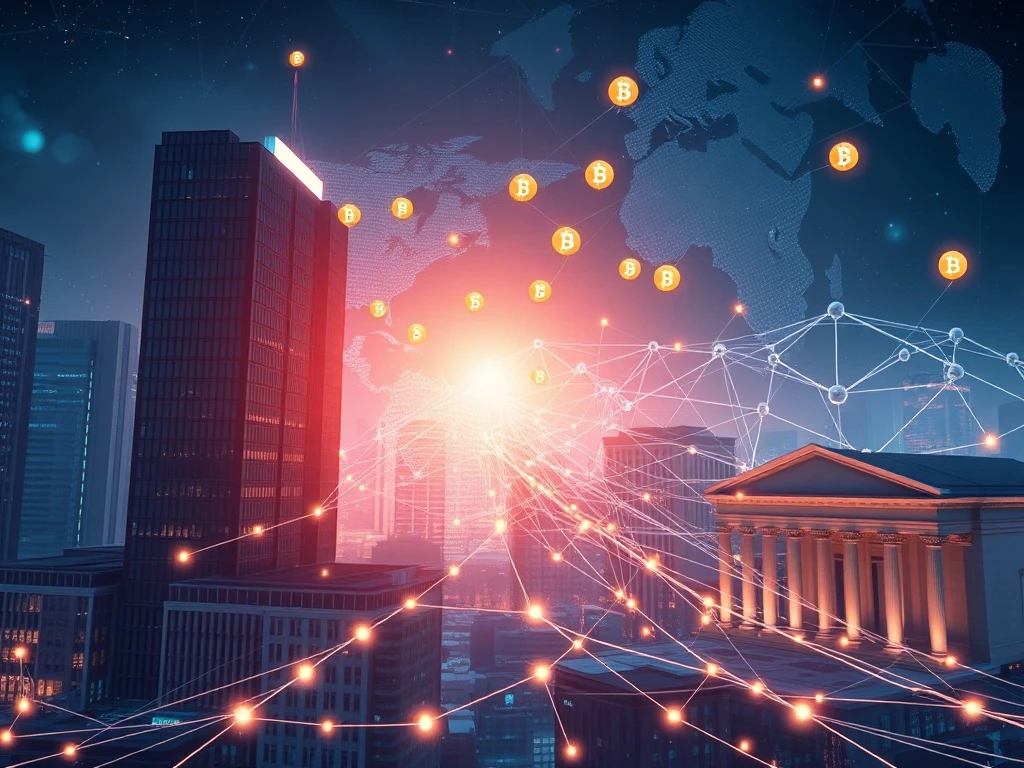RWA Tokenization: Unlocking Trillions Through Robust Institutional Foundations

RWA Tokenization is rapidly transforming traditional finance. This groundbreaking approach digitizes Real-World Assets, connecting them to the blockchain. Many cryptocurrency enthusiasts recognize its immense potential. However, some critics voice concerns about its complexity and perceived limitations. Despite these challenges, significant progress is underway. Regulatory clarity and increasing Institutional Adoption are proving its foundational role in finance’s future. Alex Zhang, co-founder at Pharos, highlights this crucial evolution. He argues that tokenizing assets alone is insufficient. Instead, we must build the robust institutions to support them.
The Evolution of Real-World Assets on Blockchain
Tokenizing Real-World Assets (RWAs) offers more than just a simple digital representation. It provides a pathway to overcome long-standing inefficiencies in traditional finance. Critics often argue that decentralization alone suffices. They also point to complexity for the masses. Additionally, they cite insurmountable regulatory hurdles. Furthermore, infrastructure gaps, fraud risks, and manipulation concerns are frequently raised. They also mention a lack of auditing and standardization. These criticisms, however, overlook the foundational work in progress. Establishing an institution-grade framework requires breaking new ground. This process ensures RWA tokenization can truly anchor the new global economy. The journey often includes initial difficulties before achieving smooth operation.
Consider the significant efforts to create compliant, high-level RWA systems. These systems aim to bridge global financial divides. They particularly impact treasuries and real estate. International investors now seek alternatives to paper-based contracts. They also avoid opaque intermediary deals and complex dispute management. RWA Tokenization offers a powerful antidote. Initially, this transformation might seem challenging. People’s natural resistance to change often leads to undervaluation. Yet, transforming tangible assets into programmable, divisible, and instantly settled digital tokens is essential. This step marks a crucial stage for Blockchain Finance maturity. Institutional funds demand institutional thinking. As Coinbase co-founder Fred Ehrsam famously stated, “Everything will be tokenized and connected by a blockchain one day.”
Unlocking Trillion-Dollar Markets with RWA Tokenization
The stablecoin market already demonstrates strong RWA demand. It currently exceeds $260 billion. This success story often silences naysayers. Indeed, it proves a huge market opportunity for RWA Tokenization. Unlocking a trillion-dollar market, however, presents its own set of hurdles. It fundamentally depends on developing robust Regulatory Frameworks. It also requires meticulously designed tokenomics. These elements must align incentives with sustainable growth. Inefficient architectures can leak value. They may also fail to integrate necessary incentives and overlook existing laws. Such oversights can lead to project failure.
Critics who highlight complexity or a lack of infrastructure often miss ongoing developments. Developers have accomplished remarkable work. Onchain Know Your Customer (KYC) solutions are emerging. Anti-Money Laundering (AML) protocols are being integrated. Identity management systems are advancing. Furthermore, institutional-grade infrastructure for custody, settlement, and reliable valuation is under active development. These key components are being launched globally. What remains are standardized compliance templates. These templates will feature limited liability structures. They will also include rapid cross-border compliance pathways. Such advancements are only a matter of time. Animoca Brands, for instance, launched the NUVA marketplace. This initiative aims to unify the ‘fragmented’ RWA sector, demonstrating industry commitment.
Global Momentum and Evolving Regulatory Frameworks
Real-world momentum for Real-World Assets is already evident. These are not mere pilot projects. They represent a shifting paradigm actively underway. The perception of uncertain regulations as a deterrent is changing. The situation has become notably clearer in recent weeks and months. The implementation of the Guiding and Establishing National Innovation for US Stablecoins Act (GENIUS Act) in the US is a significant signal. It indicates that defined regulations bring greater legitimacy. Similarly, the EU’s Markets in Crypto-Assets (MiCA) regulation is coming into force. It will roll out in phases through 2025. MiCA establishes clear, comprehensive rules. These cover token issuance, asset-backed tokens, and stablecoins across all 27 member states. This harmonization will unlock more compliant RWA products across European financial hubs.
Asia also shows strong leadership in Regulatory Frameworks. Singapore’s Project Guardian has already piloted tokenized bond issuance. It has also explored fund tokenization. Major banks like DBS and JPMorgan participated in these initiatives. The Japan Financial Services Agency introduced specific guidelines. These cover stablecoins and security tokens. This creates a proactive, regulated path for asset tokenization in East Asia. The US is not alone in its efforts. Hong Kong, another major blockchain innovator, is enforcing new stablecoin regulations. Japan has also introduced its own frameworks. These aim to shift more capital eastward and foster financial innovation. These critical recent developments are crucial. They, alongside growing support from traditional financial partners, indicate a clear path. This path leads to mainstream Institutional Adoption for RWAs.
Driving Institutional Adoption in Blockchain Finance
The mood surrounding Blockchain Finance is changing. The market is growing exponentially. Sentiment could reverse positively by the end of the year. We are moving beyond a “Wild West” era. Instead, we are entering a realm of well-governed, legitimate markets. While critics have made valid points, those actively involved see them as actionable feedback. Every negative comment about RWA Tokenization has inspired new regulatory frameworks. It has also fostered new institutional partnerships. Furthermore, it has driven the creation of new infrastructure. Ironically, the more criticized and disregarded it becomes, the more important and reliable it proves to be.
RWA Tokenization is not merely a local trend. It is occurring across global financial hubs. It offers solutions that traditional finance often lacks. People are increasingly recognizing this truth. The market has grown fivefold in just three years. Whether skeptics like it or not, the RWA vision is fast becoming tangible. We have moved past speculation. We are actively building infrastructure. We are forging regulatory alignment. The road has been challenging. However, today that road is paved. Everyone can now reimagine how value is created, owned, and exchanged onchain. This article is for general information purposes only. It should not be taken as legal or investment advice. The views expressed are the author’s alone and do not represent Crypto News Insights.







